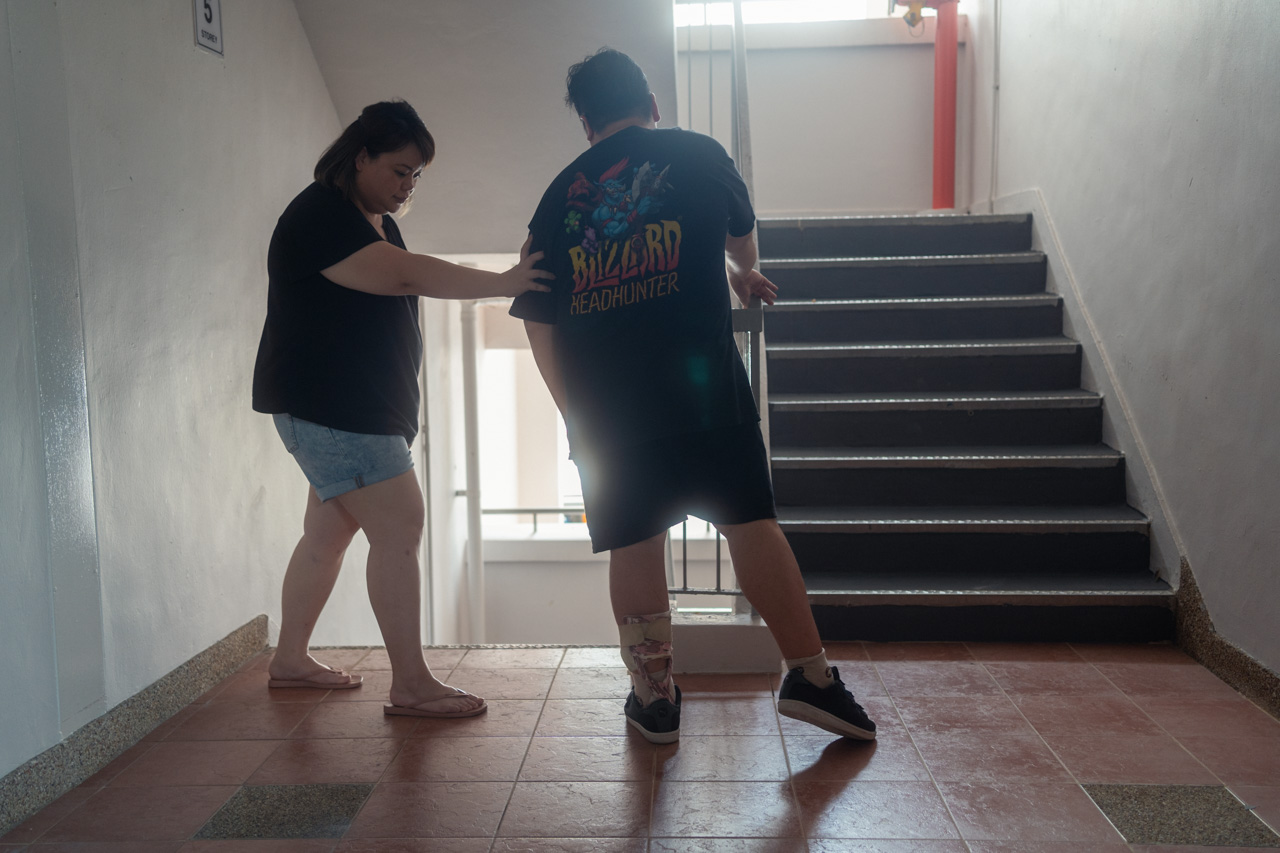All photos by Stephanie Lee for RICE Media.
35 is a great age to be. It’s considered the prime of our lives—young enough to go out and enjoy the world, old enough to sit in a comfortable financial nest.
In 2017, at the age of 35, Ian Tang received the news that he got a job at Blizzard Entertainment, the gaming company of his dreams. Being a die-hard gamer and an avid fan of Overwatch, a popular first-person shooter game, he found himself working in Taiwan for its creators and living the dream – developing games for a global fanbase
Then on a quiet day in November 2018, Ian found himself on the floor. He had suddenly lost strength in his muscles and collapsed, using the last bit of his strength to pull himself to his bathroom mat—and laid face down, thinking if he would ever see his wife again before losing consciousness.
Several days later, he woke up in a hospital bed, his wife Karen sitting by his side. She told him he had experienced a hemorrhagic stroke. He couldn’t move his hands, couldn’t walk, couldn’t eat. But he was alive.
Ian thought it was going to be game over for him. But then, he was granted a second life.
Life in Round Two
To say Ian loves games would be a gross understatement.
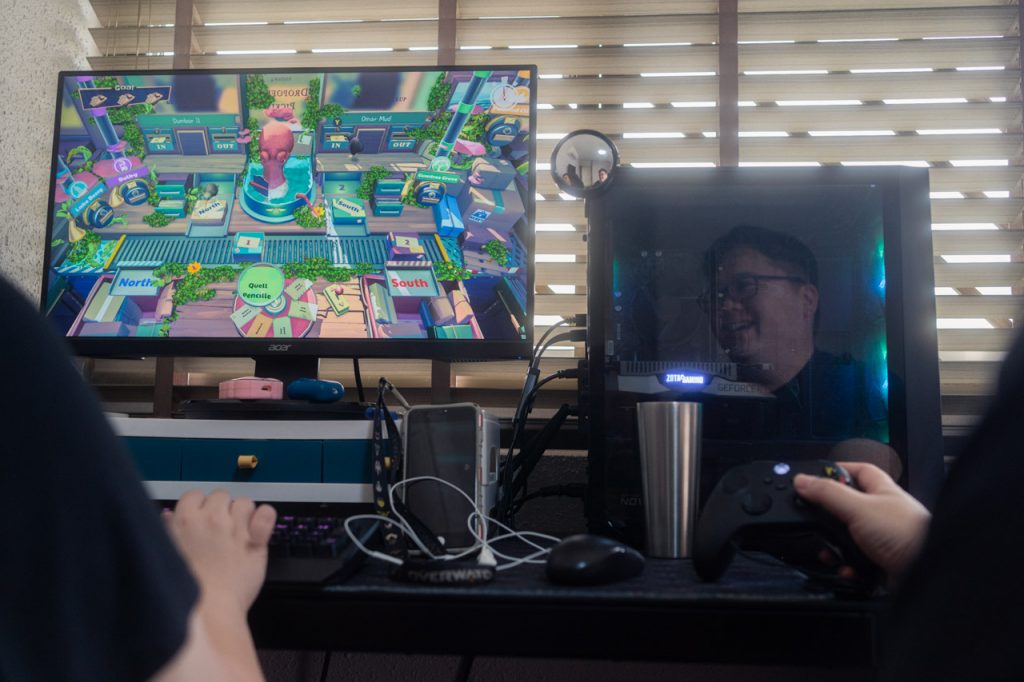
He tells me his childhood was painted in 16-bit technicolour before he discovered the world of PC games. So much of his identity is tied to the games and characters. When he was 12, he identified the most with Kefka—an antagonist from the Final Fantasy series.
“I used to see myself in him,” he explains. “I’ve always been the kind of person to march to the beat of my own drum. During that time games were looked down upon and the world kept trying to force me into a mould, but I felt like I just didn’t fit.”
Today, the 40-year-old still lives life at his own pace, though his outlook on life tilts closer to a protagonist’s than of an antagonist’s. He still plays his favourite RPGs (role-playing games) after work, banters with his wife, and they both commiserate over the uniquely Singaporean difficulty that is landing a BTO.
Gaming as a stroke survivor is different from what he was used to. Though he’s regained the ability to walk through therapy, his left arm can only make simple movements. Without fine motor abilities in his left hand, he usually opts for mouse-only games.
Other times, he uses an adaptive controller that allows him access to the usual functions with just his right hand alone.
During our visit, we were also introduced to the other accessibility tools they’ve got around the house. He gleefully shows us a reaching aid affectionately known as ‘kiap tze’ (lit. Clip Sister), which allows him to pick things up from the floor with ease.
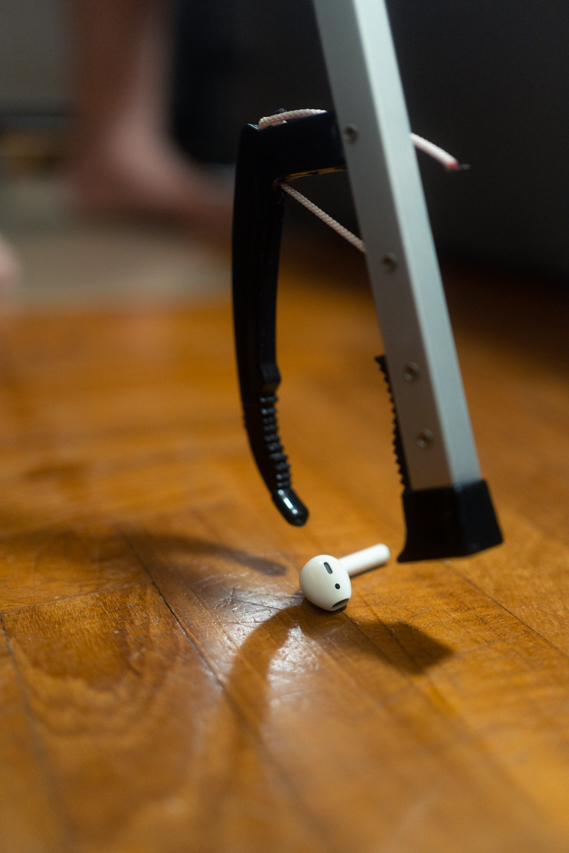
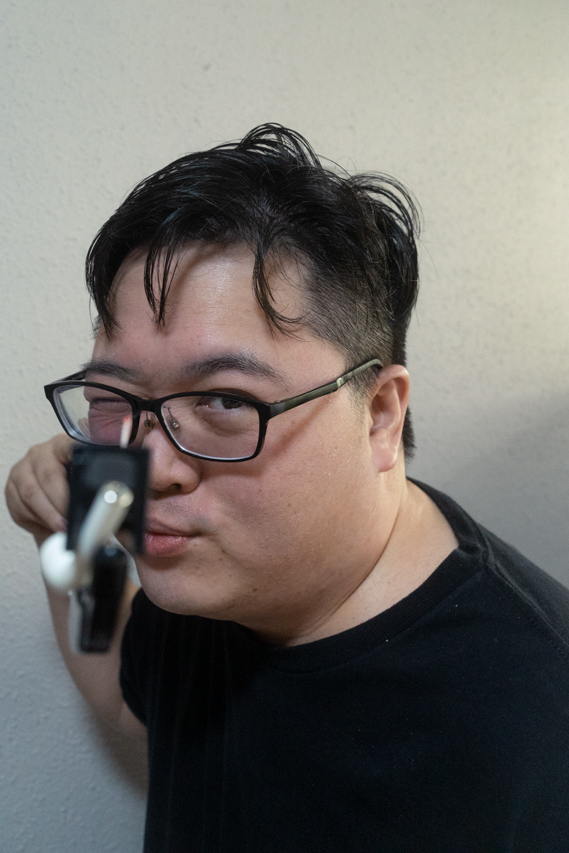
When he needs to get out of bed, he uses a rail installed by the side of his bed. A freestanding card holder lets him show off his skills in card games and various tabletop games. A top-of-the-line gaming chair lets him sink into comfort before switching on his PC.
It was a long and expensive process, filled with trials and errors before he and his family finally found the right tools. It cost just over S$1,000 to get everything done right. I surveyed their room as Karen whispered—a room, right next to theirs, is a graveyard of other ergonomic chairs that didn’t meet the mark. ‘We don’t talk about the prices of those,’ she said.
For everything that requires assistance, his wife steps in. Karen slips socks and shoes onto Ian with ease whenever they leave the house. At night, she tucks him into bed. The job is done once she’s covered him with a blanket. They have separate blankets, of course. It’s the key to a happy marriage, they say—a phrase that was coupled with fits of giggles.
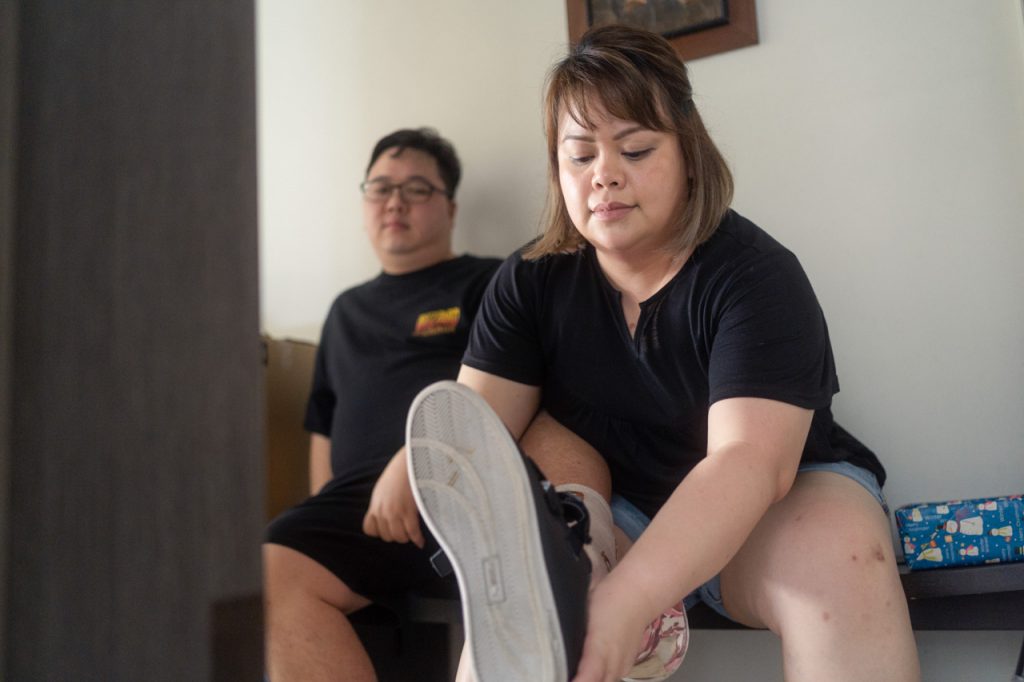
Compared with his adrenaline-fueled past, Ian now takes his time to explore open-world games like Stray—a game about escaping an underground city as a cat—even if it’s only got a pretty short gameplay time of five hours. His disability has rendered him unable to revert to his previous gaming pace, but it’s not an issue for Ian—he enjoys the opportunity to slow down and appreciate the finer details that gaming developers likely slaved over for months.
It’d be a waste not to stop and smell the roses, he adds.

Road to Acceptance
Following his departure from Blizzard, Ian had a few stints working in marketing and communication for a few years.
This year, he signed on as a Digital Operation Executive at AWWA, where he supports and advocates for youths with special needs. It’s a purpose he serves with pride, but also a purpose he took a while to find. Recovery, after all, is never linear.

After he first learnt of his condition, Ian kept a vow to walk out of the hospital within 100 days. He pushed himself through rehabilitation—he first regained the ability to sit up. Then, he could stand up. Walking came not long after that. A year later, he completed a 5km marathon.
Just when he thought things were starting to pick up, Covid-19 came knocking. Ian had a job for three days before getting retrenched—an unfortunate fate that preceded a nationwide lockdown. Job hunting was already difficult for Ian, but wading through an unstable job market as a disabled man was frightening.
He says with a shrug: “Sometimes life just does you dirty, what can you do about it? I just had to roll with the punches and keep trying.”
And try he did. For Ian, 2020 was a year of trying, and a year of rejection. It was around the same time he realised his physical recovery had also plateaued. In medical terms, that’s when a patient sees little or no gains in function after a period of rapid progress.
Up until that point, Ian believed if he pushed himself harder, he’d eventually see results. Within this frustration, his temper grew short.
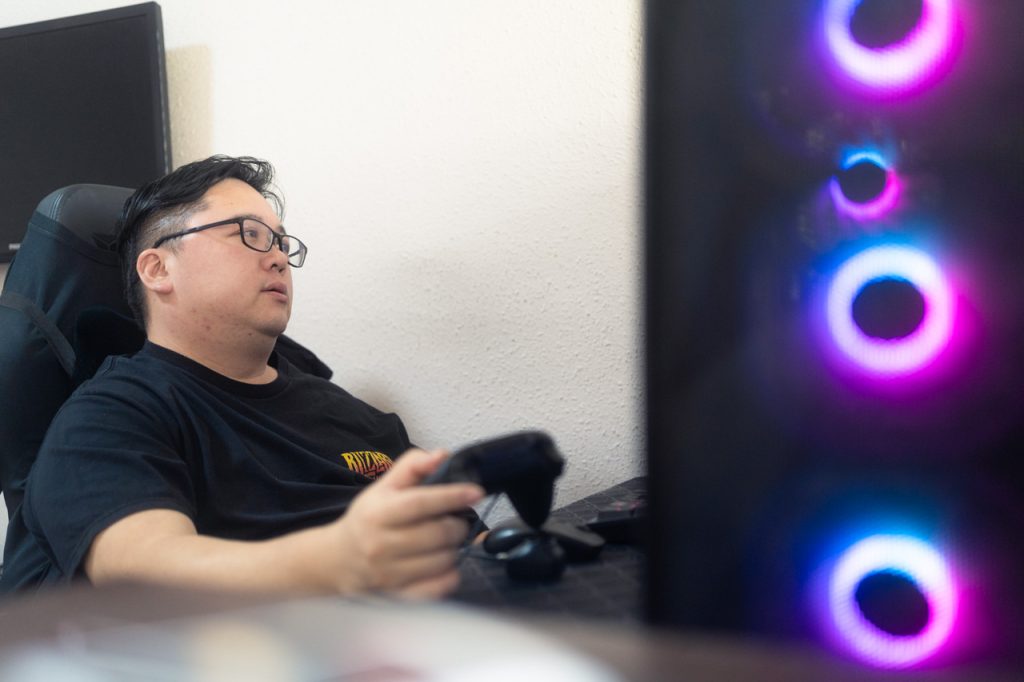
He’d later learn, through counselling, that he was still grieving—grieving for the Ian Tang he knew, but could no longer be. It was a simple, yet cathartic, revelation. Importantly, it granted him the ability to finally let go of the frustrations he used as fuel. Only then did he begin his emotional recovery.
I once saw another stroke survivor equate his personal experience to living life in hard mode. I ask if Ian feels the same. He stews over the question for a bit before replying.
“That’s a valid point of view, but the way I see it… Everyone’s got their own difficulties, we’re all living life in our own modes.”
Hindsight
Ian recalls the time when he was undergoing rehabilitation in Taiwan. Among all the stroke survivors undergoing physical therapy, he was the youngest. Strokes seem like something reserved for older folks, but he’s not an outlier.
According to the Singapore Stroke Registry, the number of stroke patients under 50 remains relatively small compared to those aged 60 and above, but their rates have risen.
The incidence rate of stroke among those between 40 and 49 years old has steadily increased from 71.9 for every 100,000 people in 2010 to 96.1 in 2020. Such rates for those aged 15 to 29 have also risen from 3.8 in 2010 to 5.7 in 2019.
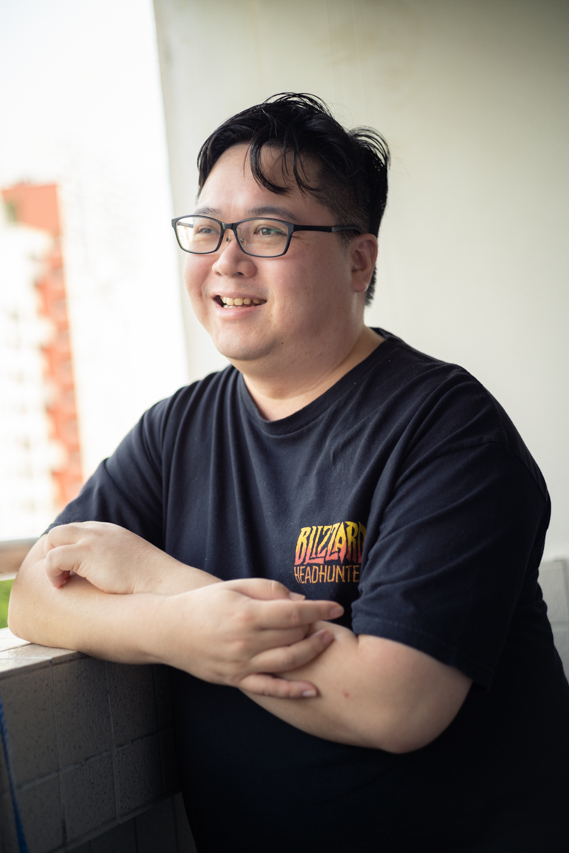
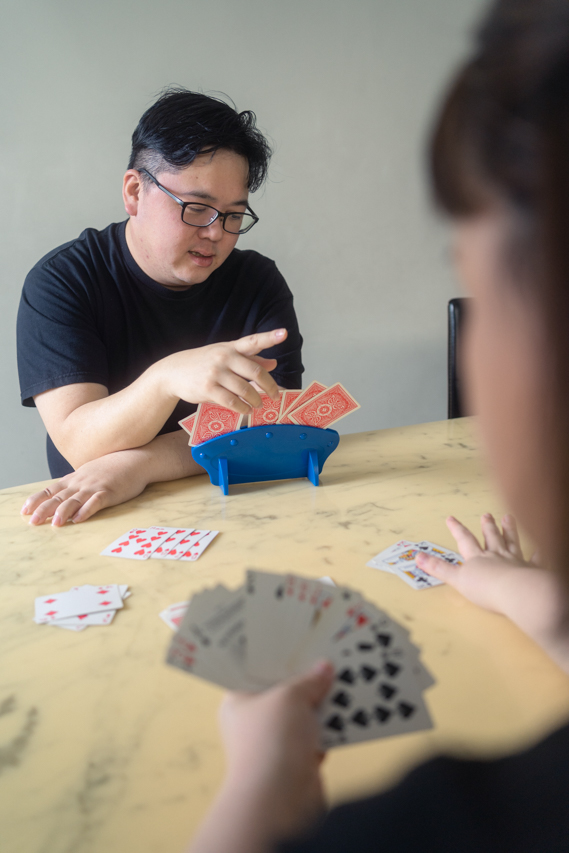
At Ian’s age, most Singaporeans are occupied by the thought of a new BTO, going on holidays, or even starting a family—with no consideration about a medical condition as frightening as a stroke. Ian, too, fell into this complacency.
Warning signs like high blood pressure or extra pounds on the scale were clear as day, but in his early 30s, Ian thought nothing of health check-ups. If he feels fine, he must be fine, right?
Other warning signs, he would learn, are more innocuous: like snoring in his sleep, or facing persistent daytime sleepiness.
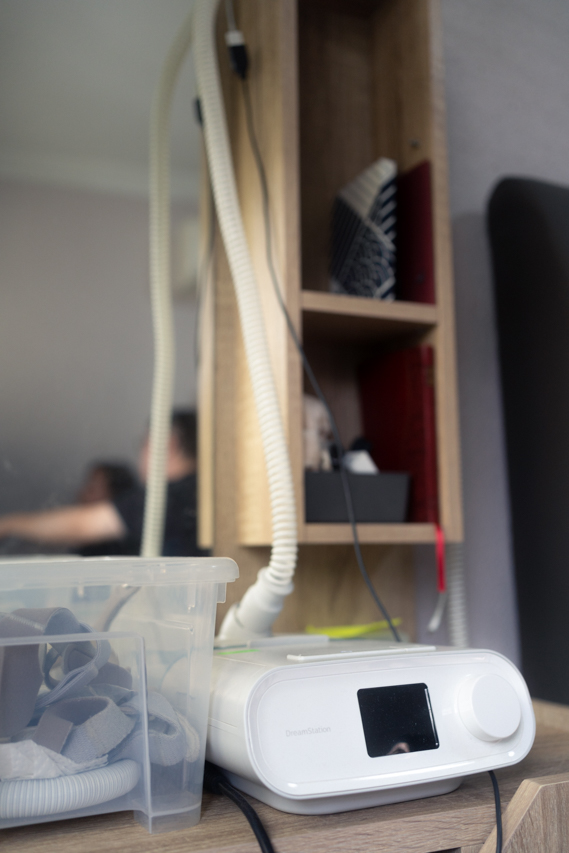
Like most Asians with flatter nose bridges, Ian suffers from sleep apnea which can increase blood pressure. Had Ian gone for regular health screenings, he would’ve learnt how, coupled with other risk factors, he had pretty solid indicators for stroke.
Ian confesses it was an oversight on his part. To further salt his wounds, he hadn’t bothered to purchase any coverage apart from basic life insurance. Any other protection came in whatever was provided by the company he worked at. Critical illness coverage or CareShield Life Supplement Plans that had severe disability support were completely off his radar.
The silver lining was Taiwan’s robust national healthcare insurance. Everything that was necessary—the surgery, the consultations, the medication—was waived. At the end of 98 days, he only had to pay around S$8,000 for the top-notch care he received. He doesn’t dare think how much more it would’ve cost had he been in Singapore.
Once he and Karen returned to Singapore, they maxed out on premiums wherever possible. Well, mostly Karen, that is. Ian points out, with regret, how most insurance policies don’t cover those with pre-existing conditions—like himself. And if they did, coverage would cost more. Or, just as worrying, come with exclusions.
Carpe Diem, Not YOLO

Having laid on his cold bathroom floor for eight hours, slowly losing consciousness and unable to move, Ian now knows there’s more to life than just having fun. YOLO and hedonism? No thank you.
“When you’re faced with the prospect of death, you learn to appreciate life a lot more.” He adds, “that’s why the first thing I did after waking up was post a selfie. I wanted to announce to the world I was alive.”
It’s, perhaps, a little cheesy to say life is a gift. But in the grand scheme of things, a life worth living is called the present, isn’t it?
“I’ve been given this second chance at life, what am I going to do with it? I’ve been changed so fundamentally by this experience. So now I’m using it to better the lives of the people around me, however I can.”

